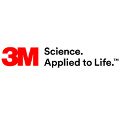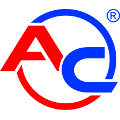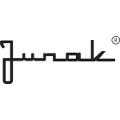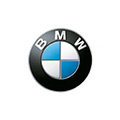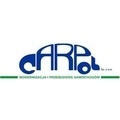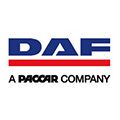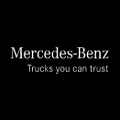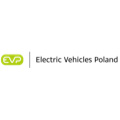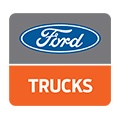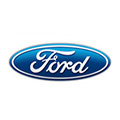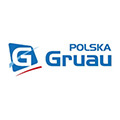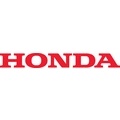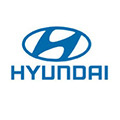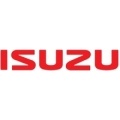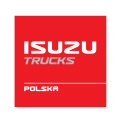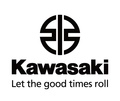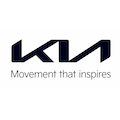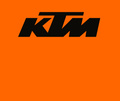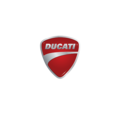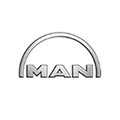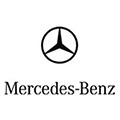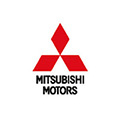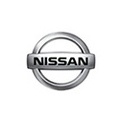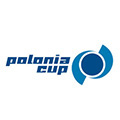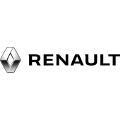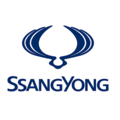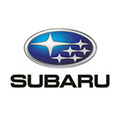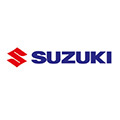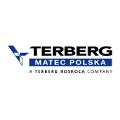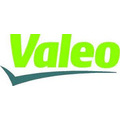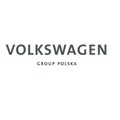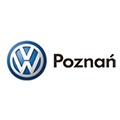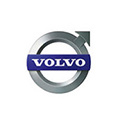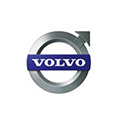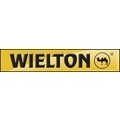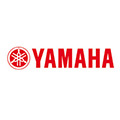Newsletter PZPM, TNS, PWC Czerwiec 2016
The automotive sector is the largest among all online advertisers. According to IAB reports, automotive marketers spent PLN 600 million last year on communication in online channels. The vast majority of this sum was allocated to acquiring leads that were subsequently supposed to be taken on by dealership chains or centralised sales structures. However, research carried out by TNS Polska indicates that 32% of such leads remain unanswered.
Acquiring information on automotive importer offer has never been this easy. Penetration of the internet reaches 70%, making it one of the fundamental channels of communication with the customer. Everyone uses the web eagerly. Both us, as consumers, and brands for their communication purposes. The result is that a potential new car buyer has a limited opportunity of avoiding exposure to advertising for new models online. Simply clicking an ad is all it takes to arrive at X or Y brand’s websites, which are now becoming ever more clear and appealing. They offer an immeasurable amount of information as well as the opportunity to put together one’s dream car. The main purpose of this sort of activity is to provoke the customer to send an enquiry (lead) to the dealership, asking for an offer for their desired model, a catalogue, or a test drive.
Models of consumer behaviour in the vehicle purchase process have changed due to the expanding access to information in the electronic media. A substantial part of the decision making process has been taking place at home, on the proverbial couch of the prospective buyer. After the conclusion of the part of the process that involves model comparison on the basis of the available information, opinions, and tests, consumers usually move on to acquiring specific information about a group of select models. One of the more convenient and time-saving means of doing this is sending an electronic enquiry (lead) to the dealership.
Such leads usually constitute the prospective buyer's first contact with the given brand’s representative, and usually are decisive in terms of the further relationship between the customer and the brand – is it going to be successful, i.e. concluded with a purchase?
As customers, when sending a lead we expect to receive special treatment from the brand’s representatives as early as at that very stage of the process. After all, we’re showing our interest. The expectation is for the dealership to respond quickly, with to-the-point answers to our questions. Are we going to stay interested in model X if our lead remains unanswered?
Asking, among others, the questions mentioned above, TNS Polska decided to verify the effectiveness and quality of responses to enquiries that are sent (via websites) to new car dealerships of most of the brands present on the Polish market. The study was conducted in April and May this year, and comprised 26 dealership chains from the popular brands and premium brands segments. A total of 1295 leads were sent via the tested brands’ websites, one per each sales point. The enquiries included questions about offers for particular models, with a medium range of optional equipment.
The findings indicate that 32% of the leads sent in by the customers remain unanswered. The brands that were the most likely to answer enquiries included: Volkswagen (87,5%), Peugeot (86,4%), Citroen (83,6%), and Mitsubishi (78,9%). It is also noteworthy that in the case of some of the brands, the dealerships responded to less than half of the enquiries sent electronically. Out of the entire pool of responses from the dealerships, 5% didn’t make any reference to the questions asked by the customer at all. These were mostly requests to contact a sales assistant on the phone. In our opinion, good practice requires that customers receive their response via the same contact channel they used to send the enquiry. Should they want to have a telephone conversation about the offer, they would have called the dealership themselves. Apart from that, if they receive answers to their questions in the electronic form, they have a specific offer to refer to when they visit the dealership.
Responding to a customer’s enquiry alone is not enough to guarantee success. The response should come relatively quickly, and contain answers to the questions the customer asked.
The dealerships that answered TNS’s enquiries handled the promptness aspect well enough. Considering all the answers we received, more than half of them (56%) came within 4 working hours from the moment the query was sent. Expected response time should not exceed 8 working hours, or a single day of a dealership’s work. 79% of the leads we sent were handled within this time frame.
The content of the responses deserves a closer look as well. The following customer service aspects were evaluated in the study:
• polite form of address in the opening and closing of the message
• invitation to visit the dealership and take a test drive
• formal message formatting, no typing errors or mistakes
• information about financing and the option to trade in one’s old car
As far as quality is concerned, Peugeot sales staff offered the best responses, with almost every single one of the provided answers containing the relevant information, and the brand as a whole meeting 92.% of the standards verified in the study. Citroen was number two in terms of the content of the provided answers, meeting 84.1% of the relevant standards. Both these brands are members of the PSA group, which justifies the assumption that their sales force undergo a very similar training process. The subsequent places in the ranking went to the following brands: Seat (78,6%), Mitsubishi (78,5%), and Volkswagen (77,6%).
The final places in the ranking are occupied by dealerships that provided only half of the expected information in their responses to our enquires. The question is, would this sort of response convince prospective buyers to choose the given brand and visit its dealership.
The study showed that even though the brands invest a lot in receiving leads online, their sales force often fail to utilise the potential that this contact channel offers. Furthermore, it seems that tools such as contact forms are unreliable, and they don’t guarantee that our enquiry is going to actually reach the dealership. Ignoring leads, be it due to systemic errors or dilatory personnel, certainly doesn’t help with the customers’ purchase decisions concerning the brand that fails to provide a satisfactory answer.
Commentary by: Karolina Wetoszka, TNS Polska’s Automotive Research Team Customer Experience Management Expert. Study: TNS Auto Leads 2016.
Branża motoryzacyjna jest największym reklamodawcą w internecie. Według danych IAB w ubiegłym roku marketerzy motoryzacyjni na komunikację w kanałach cyfrowych wydali 600 milionów złotych. Zdecydowana większość tej kwoty została przeznaczona na pozyskanie leadów, które miały następnie zostać podjęte przez sieci dealerskie lub centralne struktury sprzedaży. Tymczasem z badania zrealizowane przez TNS Polska wynika, że 32% leadów zostaje bez odpowiedzi. Więcej >>
Zdobycie informacji o ofercie importerów samochodów nigdy nie było tak proste. Penetracja internetu sięga już 70% w związku z czym stał się on jednym z podstawowych kanałów komunikacji z konsumentami również w motoryzacji. Z internetu chętnie korzystają wszyscy. Zarówno my jako konsumenci, jak i marki w swojej komunikacji. Efekt jest taki, że potencjalny nabywca nowego samochodu ma ograniczone szanse uniknięcia kontaktu z reklamami nowych modeli w internecie. Wystarczy kliknąć w reklamę, żeby przenieść się na strony internetowe marki X lub Y, które są coraz bardziej czytelne i atrakcyjne. Oferują niezliczoną ilość informacji oraz możliwość skonfigurowania samochodu marzeń. Podstawowym celem tych działań jest sprowokowanie klienta do wysłania zapytania (lead) do salonu z prośbą o ofertę na wybrany model, katalog czy jazdę próbną.
Dzięki rozwojowi dostępu do informacji w mediach elektronicznych zmienił się wzorzec zachowań konsumentów w procesie zakupu samochodu. Od kilku lat duża część procesu decyzyjnego odbywa się na przysłowiowej kanapie w domu potencjalnego kupującego. Kiedy zakończy się część porównywania modeli na postawie dostępnych informacji, opinii, testów konsumenci zazwyczaj przechodzą do pozyskiwania już konkretnych informacji na temat wąskiej grupy wyselekcjonowanych modeli. Jednym z bardziej wygodnych i oszczędzających czas rozwiązań jest wysłanie drogą elektroniczną zapytania do dealera (leadu).
Wysłany lead to zwykle pierwszy kontakt potencjalnego klienta z przedstawicielem danej marki i od niego zwykle zależy, jak dalej potoczy się relacja między klientem, a marką. Czy zakończy się sukcesem czyli zakupem samochodu?
Jako klienci, wysyłając leada, oczekujemy, że okazując zainteresowanie ofertą marki, już na tym wstępnym etapie zostaniemy wyjątkowo potraktowani przez jej przedstawicieli. Spodziewamy się szybkiej reakcji ze strony dealera, która będzie zawierała merytoryczne odpowiedzi na nasze pytania. Czy nadal będziemy zainteresowani modelem X, jeśli nasz lead pozostanie bez odpowiedzi?
Stawiając sobie między innymi takie pytanie, firma TNS Polska zdecydowała się zweryfikować jaka jest skuteczność i jakość odpowiedzi na zapytania nadchodzące ze stron internetowych do dealerów sprzedających samochody nowe większości marek obecnych na Polskim rynku. Badanie zostało wykonane w kwietniu i maju bieżącego roku, a objęte nim został sieci dealerskie 26 w segmencie marek popularnych oraz w segmencie marek premium. Łącznie wysłano 1295 leadów ze stron internetowych badanych marek , po jednym do każdego punktu sprzedaży. W zapytaniach pytano o ofertę na popularny model o średnim poziomie wyposażenia.
Z badania wynika, że aż 32% z przesłanych przez klientów zapytań pozostaje bez odpowiedzi. Najczęściej klienci mogą liczyć na odpowiedź na swoje zapytanie z marek: Volkswagen (87,5%), Peugeot (86,4%), Citroen (83,6%) oraz Mitsubishi (78,9%). Warto podkreślić, że są również marki, których dealerzy odpowiadają na mniej niż połowę zapytań otrzymanych drogą elektroniczną. Z całej puli odpowiedzi otrzymanych od dealerów 5% zupełnie nie odnosiło się do pytań stawianych przez klienta. Były to głównie prośby o kontakt telefoniczny z handlowcem. Naszym zdaniem dobrą praktyką jest odpowiadanie klientowi tym samym kanałem kontaktu, który wybrał do przesłania zapytania. Chcąc porozmawiać telefonicznie o ofercie salonu klient samodzielnie zainicjowałby kontakt telefoniczny. Poza tym, mając odpowiedź na swoje pytania w formie elektronicznej, udając się do salonu może odnieść się do konkretnej oferty otrzymanej wcześniej.
Samo przesłanie klientowi odpowiedzi nie jest jeszcze kluczem do sukcesu. Odpowiedź powinna przyjść relatywnie szybko i zawierać odpowiedź na postawione przez niego pytania.
Te salony, które odpowiedziały na zapytania TNS, z szybkością poradziły sobie całkiem dobrze. Biorąc pod uwagę wszystkie otrzymane odpowiedzi, ponad połowa (56% ) nadeszła w ciągu 4 godzin roboczych od wysłania zapytania. Oczekiwany czas odpowiedzi na zapytanie klienta nie powinien być dłuższy niż 8 godzin roboczych, czyli jeden dzień pracy salonu. W takim czasie zostało obsłużonych 79% wysłanych leadów.
Warto zwrócić uwagę na samą zawartość merytoryczną przesłanych odpowiedzi. W badaniu oceniane były m.in. takie elementy obsługi jak:
- grzecznościowe rozpoczęcie i zakończenie wiadomości
- zaproszenie do salonu i na jazdę próbną
- formalne formatowanie wiadomości oraz brak błędów i literówek
- informacja o finansowaniu oraz możliwości zostawienia samochodu w rozliczeniu
Pod względem jakościowym najlepiej wypadają odpowiedzi przesyłane przez handlowców marki Peugeot, gdzie w prawie każdej otrzymanej wiadomości są zawarte informacje, które były oceniane, a cała marka merytorycznie wypełniła 92,3% weryfikowanych w badaniu standardów. Na drugim miejscu pod względem zawartości swoich odpowiedzi wypada marka Citroen, spełniając 84,1% oczekiwanych standardów merytorycznych. Obie marki wchodzą w skład koncertu PSA, stad można wnioskować, że proces szkoleniowy handlowców obu marek jest bardzo zbliżony. Na pozostałych miejscach rankingu znajdują się kolejno marki: Seat (78,6%), Mitsubishi (78,5%) oraz Volkswagen (77,6%).
Ranking zamykają sieci dealerskie, które przekazały tylko połowę oczekiwanych informacji w odpowiedzi na przesłane przez nas zapytania. Pytanie, czy tego typu odpowiedzi przekonają potencjalnego klienta do wyboru danej marki i odwiedzin salonu?
Przeprowadzone badanie pokazało, że mimo tego iż marki mocno inwestują w pozyskiwanie zapytań przez internet, to ich handlowcy często nie wykorzystują drzemiącego potencjału w tym kanale kontaktu. Ponadto wydaje się, że same narzędzia takie jak formularze kontaktowe są zawodne i nie gwarantują efektywnego dostarczenia zapytania do salonu. Ignorowanie leadów, czy to przez błędy systemowe, czy przez opieszałość pracowników stacji dealerskich, z pewnością nie wpływa pozytywnie na decyzje zakupowe klientów w stosunku do marki, z której odpowiedzi brak lub jest niesatysfakcjonująca.
Autorką komentarza jest Karolina Wetoszka, Ekspert w zakresie Customer Experience Management w zespole badań rynku motoryzacyjnego TNS Polska. Badanie TNS Auto Leads 2016.

